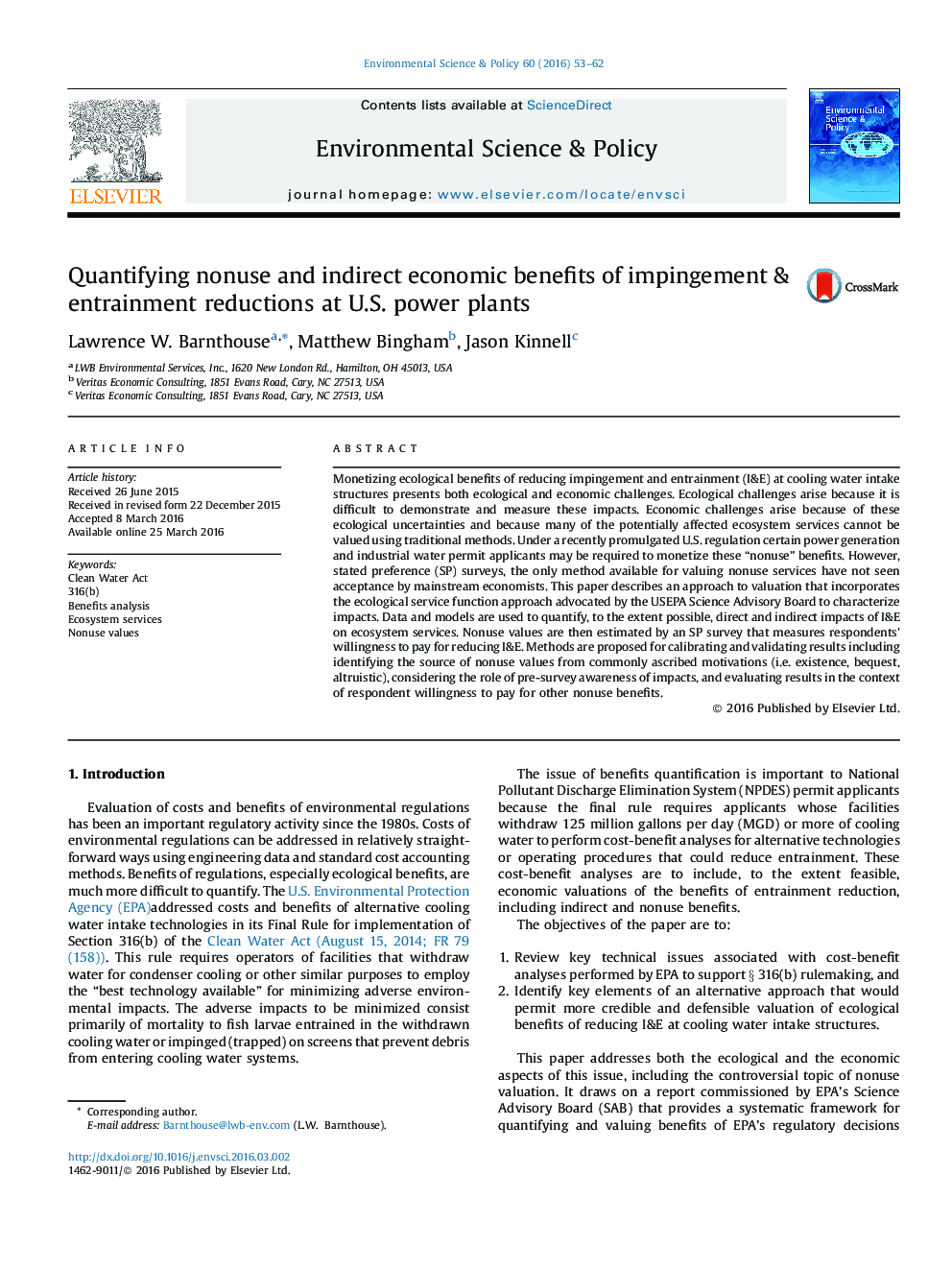| Article ID | Journal | Published Year | Pages | File Type |
|---|---|---|---|---|
| 7466913 | Environmental Science & Policy | 2016 | 10 Pages |
Abstract
Monetizing ecological benefits of reducing impingement and entrainment (I&E) at cooling water intake structures presents both ecological and economic challenges. Ecological challenges arise because it is difficult to demonstrate and measure these impacts. Economic challenges arise because of these ecological uncertainties and because many of the potentially affected ecosystem services cannot be valued using traditional methods. Under a recently promulgated U.S. regulation certain power generation and industrial water permit applicants may be required to monetize these “nonuse” benefits. However, stated preference (SP) surveys, the only method available for valuing nonuse services have not seen acceptance by mainstream economists. This paper describes an approach to valuation that incorporates the ecological service function approach advocated by the USEPA Science Advisory Board to characterize impacts. Data and models are used to quantify, to the extent possible, direct and indirect impacts of I&E on ecosystem services. Nonuse values are then estimated by an SP survey that measures respondents' willingness to pay for reducing I&E. Methods are proposed for calibrating and validating results including identifying the source of nonuse values from commonly ascribed motivations (i.e. existence, bequest, altruistic), considering the role of pre-survey awareness of impacts, and evaluating results in the context of respondent willingness to pay for other nonuse benefits.
Related Topics
Physical Sciences and Engineering
Energy
Renewable Energy, Sustainability and the Environment
Authors
Lawrence W. Barnthouse, Matthew Bingham, Jason Kinnell,
